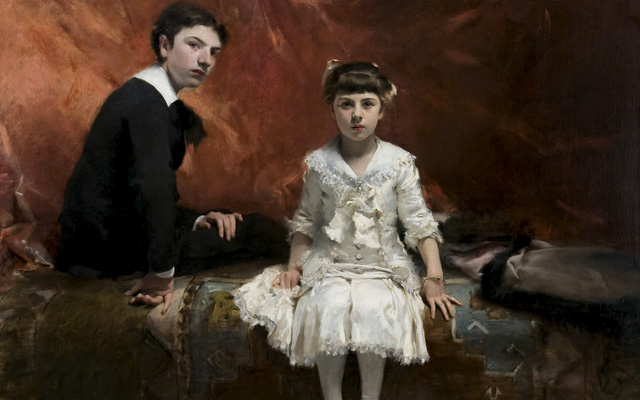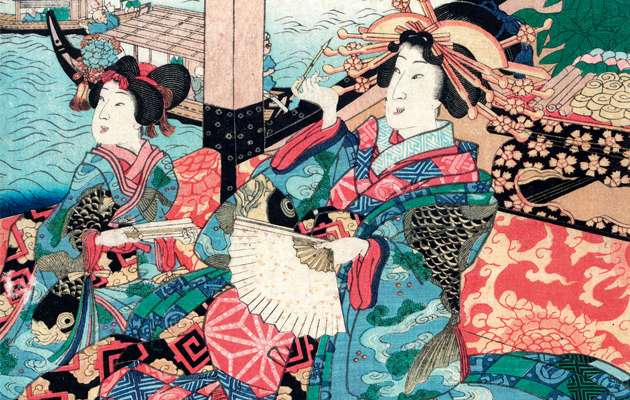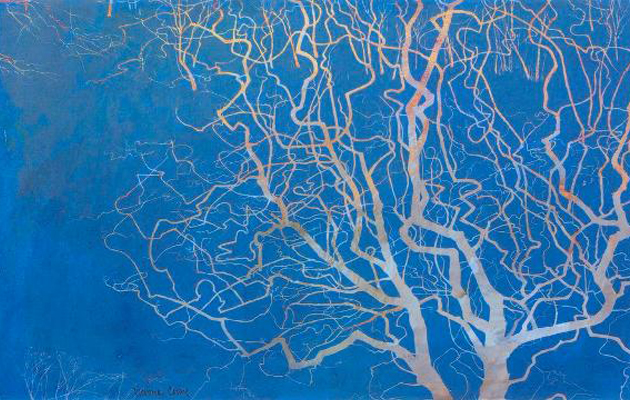Exhibition review: 'Sargent: Portraits of Artists and Friends' in London
Matthew Dennison is dazzled by an array of paintings by John Singer Sargent depicting his friends.


Status-driven is the adjective used by Sargent specialist Trevor Fair-brother in connection with the bulk of the portraitist’s sitters and, indeed, many of Sargent’s subjects, from aristocratic scions to the conspicuously newly wealthy, intended their portraits to confirm their own assessment of their worldly position and consequence. For three decades, Sargent humoured their vainglory, before retiring from portrait painting in 1907.
Society portraiture was unquestionably lucrative. Sargent’s motives, however, transcended financial gain. A significant body of his work possesses a more experimental, avant-garde quality and such Expressionism unsettled the late-Victorian plutocracy.
Instead, the painter realised these less conventional ambitions in the portraits he painted of friends and fellow artists, from his Parisian painting teacher Carolus-Duran and the Spanish dancer Carmen Dauset, known as La Carmencita, to the amateur mezzo-soprano and mistress of the Prince of Wales, Mabel Batten (née Hatch). It is works of this variety, showcasing Sargent’s lifelong engagement with new developments in art, music and literature, that comprise the present, large-scale exhibition.
The Impressionist landscapist Camille Pissarro once dismissed a 30-something Sargent as ‘an adroit performer’. Less waspishly, the sculptor Rodin later acclaimed him as the ‘Van Dyck of our times’. Both positive and negative assessment point to the invariable requirement of portraiture to flatter.
The paintings currently brought together demonstrate none of the facile ease, bombast or empty prettiness sometimes attributed to Sargent’s bread-and-butter work. Here, instead, are exercises in a purer aestheticism, concerned with form and colour W. Graham Robertson of 1894 and the well-known Carnation, Lily, Lily, Rose of the previous decade, for example or portraits such as those of woman of letters Vernon Lee, translator Emma Allouard-Jouan and the ageing writer George Meredith, which achieve a level of psychological insight that remains arresting in its power.
The National Portrait Gallery intends ‘Sargent: Portraits of Artists and Friends’ to challenge the conventional categorisation of Sargent as a bravura exponent of the swagger portrait. Wide-ranging friendships with artists and performers in a number of disciplines testify to the breadth of the painter’s cultural awareness. Sargent emerges as a polymath of omnivorous tastes, a passionate advocate of the music of Wagner and the paintings of Manet and a devotee of the works of Montaigne and Voltaire (at his death in April 1925, a volume by Voltaire lay open at his side).
Ambivalently, fellow expatriate American Henry James noted in Sargent what he described as ‘a certain sort of excess of cleverness’. There seems little doubt that Sargent’s cultural interests from grand opera, pre-Raphaelitism and Japonisme to the films of Charlie Chaplin were sincere.
Sign up for the Country Life Newsletter
Exquisite houses, the beauty of Nature, and how to get the most from your life, straight to your inbox.
Of the paintings currently on display, several arose at Sargent’s instigation, such as the mask-like likeness of fin-de-siècle Italian tragedienne Eleonora Duse, for which Duse granted the artist a sitting lasting only 55 minutes, and Sargent’s deliberately Impressionist plein air image of artist Paul Helleu and his wife, Alice, with its dashing Monet-influenced landscape setting, tilted perspective and off-centre composition.
For all the painting’s contrived spontaneity, a series of related sketches and smaller portrait studies of both Helleus demonstrates the diligence and considered nature of Sargent’s working methods, even in works like this that theoretically offered the artist respite from the demands of his usual stock-in-trade.
Marie-Louise Pailleron recorded that her parents allowed Sargent no fewer than 83 sittings for the double portrait he painted in 1881 of the 11-year-old and her brother Édouard. The artist’s tenacity is fully justified in this unsettlingly claustrophobic image.
The children are depicted in a richly coloured studio interior, with the viewer’s attention chiefly drawn to Marie-Louise’s own stubbornly direct gaze. Subse-quent viewers have been reminded of the children in Henry James’s ghost story, The Turn of the Screw. It is an ambiguous image, which provokes both admiration and unease.
Unlike the bulk of Sargent exhibitions, the present show does not offer us a collection of postcard-pretty likenesses fluffily wrapped in costly dress or uniform. Few of these images aim at conventional prettiness, although The Fountain, Villa Torlonia, Frascati, Italy of 1907 a double portrait of artists Wilfred and Jane de Glehn and a later outdoor portrait of Jane de Glehn, In a Garden, Corfu suggest an appealingly Edwardian languorousness.
Yet one undoubted showstopper demonstrates Sargent’s talent for insightful brio. Dr Pozzi at Home is a theatrically sensual image of the leading gynaeco-logist of his day. In 1882, Sargent chose it as the first painting he exhibited at the Royal Academy. Its historicist lushness announced the arrival in London of a daring new genius an artist whose portraiture balanced earlier influences with a very modern sensibility.
‘Sargent: Portraits of Artists and Friends’ is at the National Portrait Gallery, London WC2, from February 12 to May 25 (020–7306 0055; www.npg.org.uk)

Exhibition review: 'Cotton to Gold'
Caroline Bugler reviews 'Cotton to Gold' at Two Temple Place in London.

Exhibition review: Victoria Crowe Winter Sequence
Lilias Wigan reviews an exhibition of Victoria Crowe’s recent works that reflect her wintry vision and the changing effects of
Country Life is unlike any other magazine: the only glossy weekly on the newsstand and the only magazine that has been guest-edited by HRH The King not once, but twice. It is a celebration of modern rural life and all its diverse joys and pleasures — that was first published in Queen Victoria's Diamond Jubilee year. Our eclectic mixture of witty and informative content — from the most up-to-date property news and commentary and a coveted glimpse inside some of the UK's best houses and gardens, to gardening, the arts and interior design, written by experts in their field — still cannot be found in print or online, anywhere else.
-
 How an app can make you fall in love with nature, with Melissa Harrison
How an app can make you fall in love with nature, with Melissa HarrisonThe novelist, children's author and nature writer Melissa Harrison joins the podcast to talk about her love of the natural world and her new app, Encounter.
By James Fisher
-
 'There is nothing like it on this side of Arcadia': Hampshire's Grange Festival is making radical changes ahead of the 2025 country-house opera season
'There is nothing like it on this side of Arcadia': Hampshire's Grange Festival is making radical changes ahead of the 2025 country-house opera seasonBy Annunciata Elwes